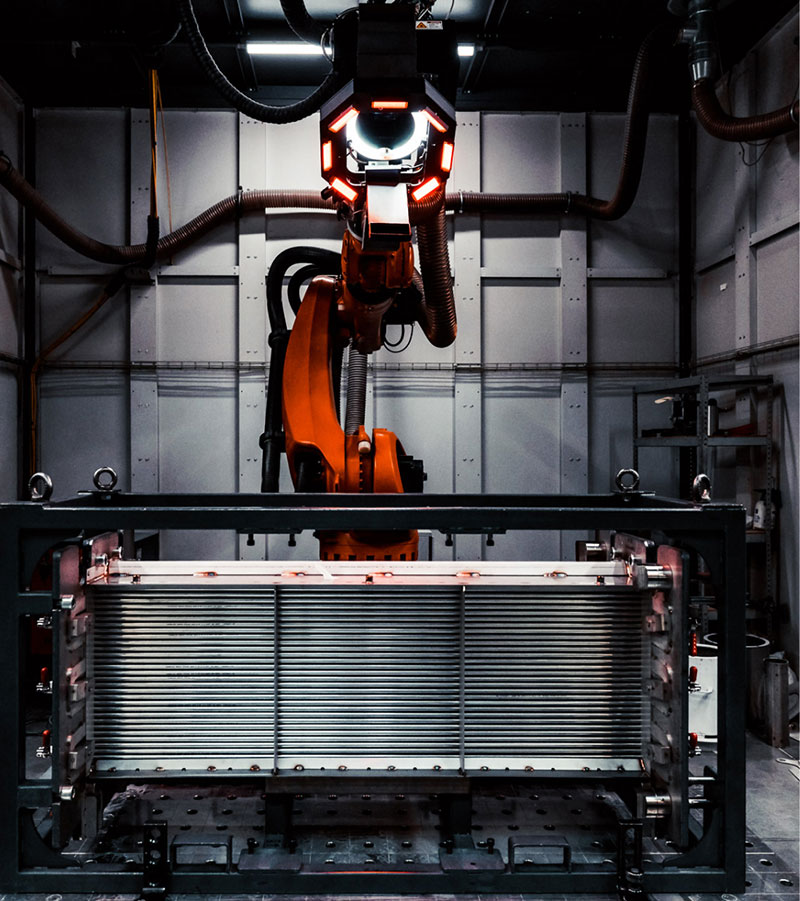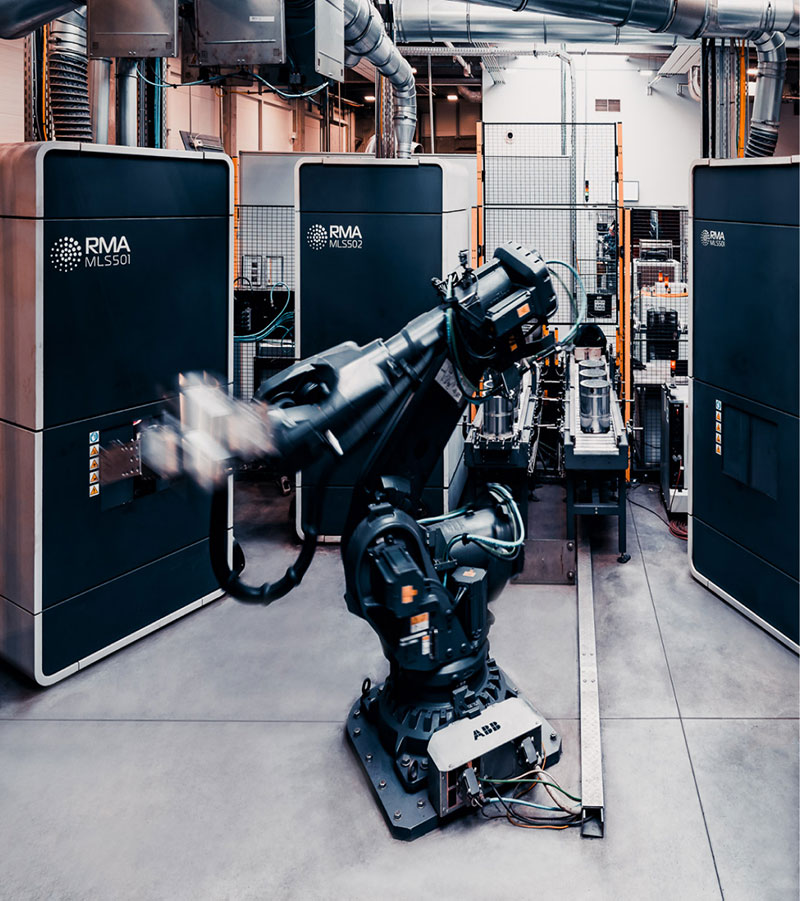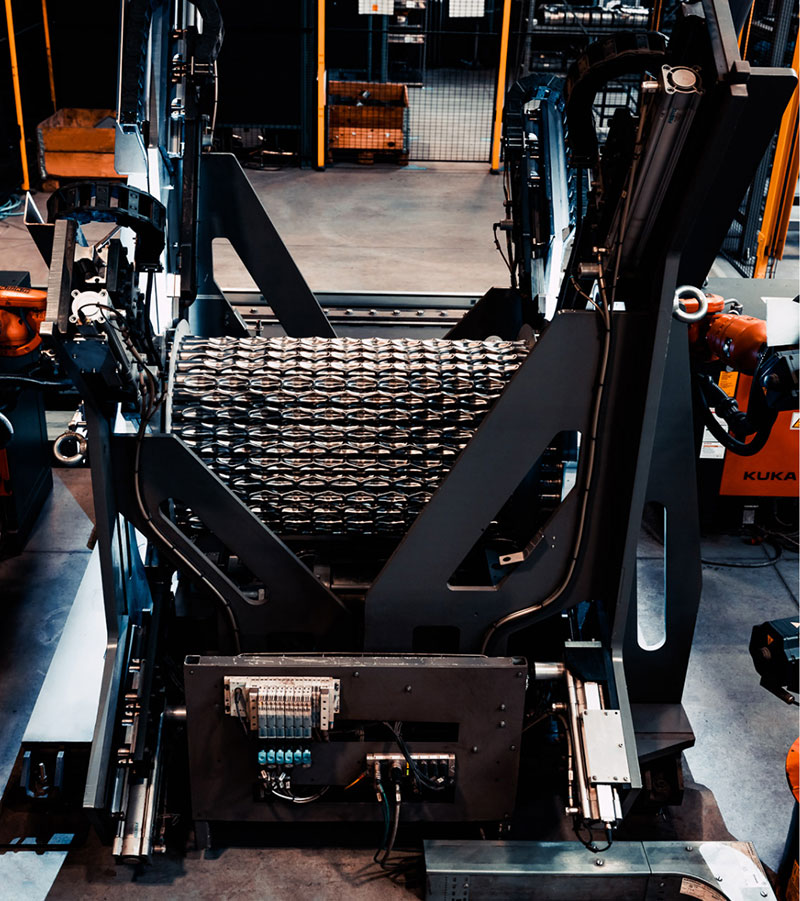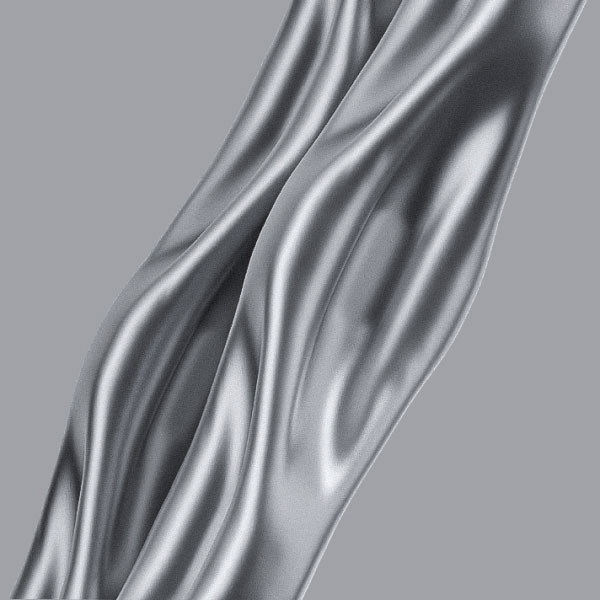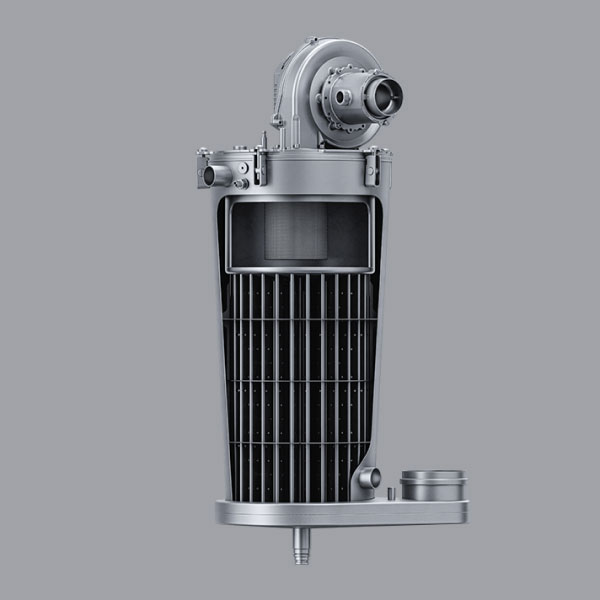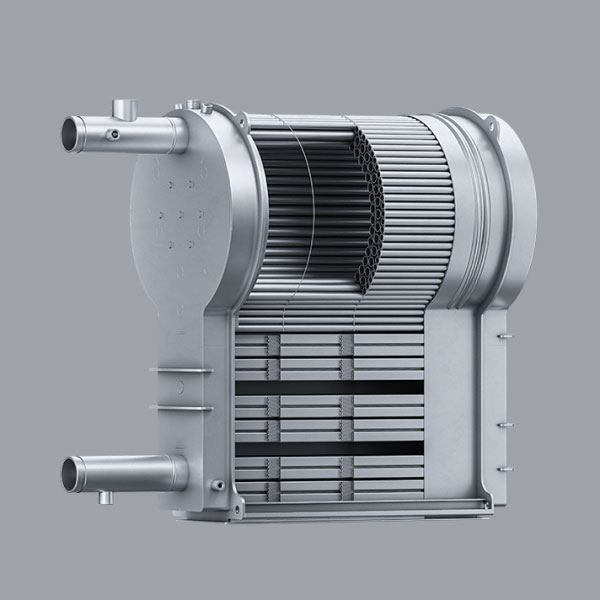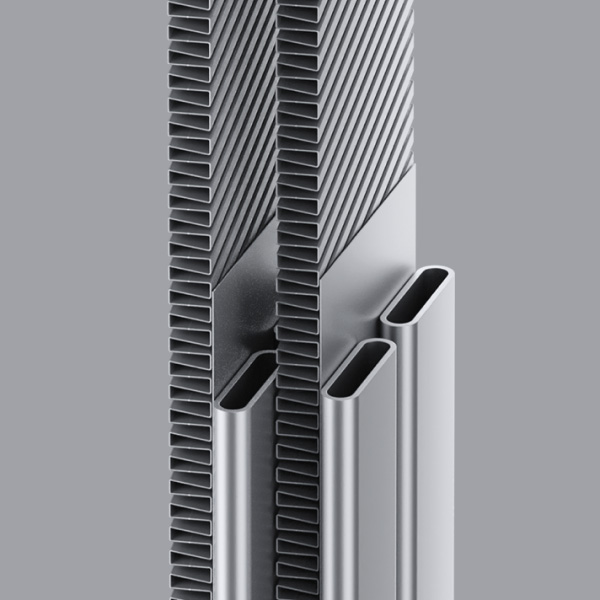Laser Welding
A precise and efficient welding process that can be applied to join a wide range of metal alloys.
AIC’s laser welding experts operate with several different lasers to form high-quality welds in our products. The know-how and the ability to vary the laser power and spot size result in a wide range of weld widths and depths essential to the solid structure and durability of the exchangers.
Overview
Laser Welding is a versatile process – it can weld thin materials within a short period of time, as well as thicker materials with narrow and deep welds. This technique can be performed on a variety of materials, including stainless steel, titanium, and aluminium.
Laser welding is a process that uses a laser to produce a high-energy beam of light that is directed at the joint between two metal components. The heat generated by the laser beam melts the metal at the joint, allowing the two components to be fused together.
Laser welding is a fast and precise process that can produce narrow welds with minimal distortion and a small heat-affected zone. It does not require filler material and can be used to join a wide range of metal alloys.
The advantage of laser beam welding is that it allows for welding components with complex geometries or in hard-to-reach locations, as the laser beam can be directed at the joint from any angle.
Mirror welding is the type of laser welding frequently used at AIC. By reflecting the laser beam off a mirror, it can be focused on a very narrow surface, producing a precise weld. In addition, the use of mirrors increases the speed of the welding process (using mirrors allows us to move from welding one joint to another without moving the laser head, which is always time-consuming). It results in an exact and accurate welding process.
Advantages
The accuracy and precision of laser welding results in low thermal distortion, which makes it perfect for welding various sensitive metal materials.
Precision
Laser welding is highly precise and can produce welds with a minimal distortion.
High welding speed
Laser welding is much faster than traditional welding methods, as the laser beam can be moved quickly over the workpiece.
Reduced heat input
The small size of the laser beam means that it delivers a high amount of energy to a small area, minimizing the amount of heat input into the surrounding material. This can reduce the risk of distortion and heat-affected zones.
Ability to weld complex parts
The small size of the laser beam allows it to access hard-to-reach areas and weld small or complex parts with ease.
High-quality welds
Laser welding can produce high-quality welds with minimal defects.
Automation
Laser welding can be easily automated, making it suitable for high-volume production.
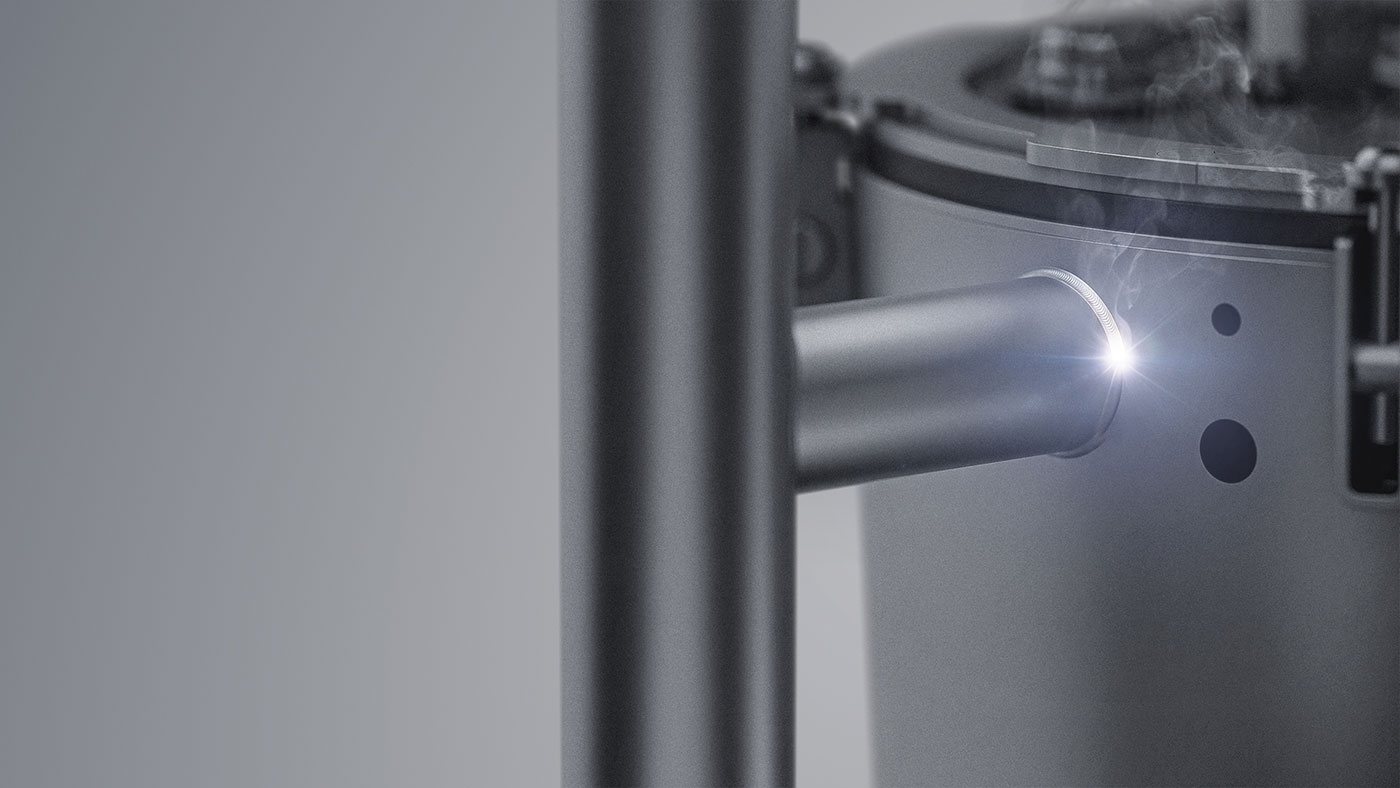
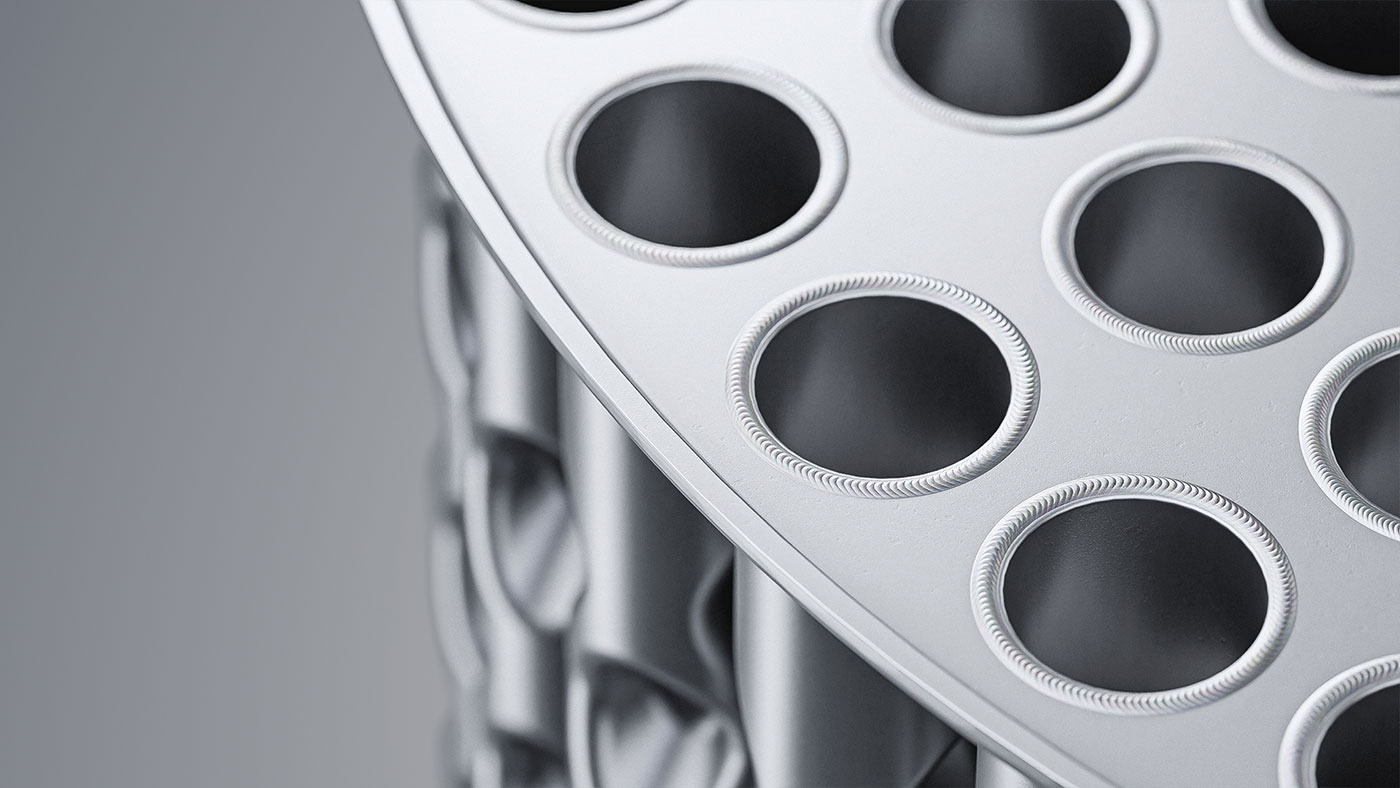
Laser welding at AIC
At AIC, we use Laser Beam Welding technology in the production of heat exchangers due to the repeatable quality of joints and the high speed of the process.
Our factory is equipped with mirror laser cells with vision and laser beam cells that work on automated production lines for high-speed welding.
When manufacturing heat exchangers, making connections between the tubes and the tube sheet is the most labour-intensive process. There are nearly 10000 connections to be welded in the largest heat exchangers.
At AIC, we use a unique contrast that recognizes the locations of joints and plans the trajectory of the welding head with high precision. As a result, manual welding takes several days, while automatic laser welding takes about 4 hours.
AIC has fully automated lines to produce heat exchangers. Robots use the Laser Beam Welding method for the longitudinal welds of the shell and circumferential connections between the shell, tube package, and combustion chamber.
We also use laser welding to make the longitudinal connection on the automated tube production lines, where uniquely dimpled tubes are produced from stainless steel metal tape.
